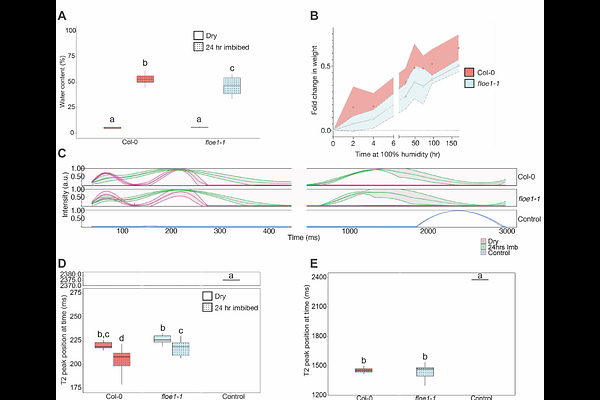FLOE1 maintains cellular viscosity in rehydrating Arabidopsis embryos

FLOE1 maintains cellular viscosity in rehydrating Arabidopsis embryos
Field, S.; Ramirez, J. F.; Dorone, Y.; Cox, J. A.; Boothby, T. C.; Rhee, S. Y.
AbstractMost plant embryos can survive for years in a dry state of less than 10% water(1). Rehydration during seed germination is critical but risky, too little environmental water can dehydrate and kill the developing embryo. Plants avoid this by germinating only when sufficient water is present. However, the mechanisms by which sufficient water is sensed and how it triggers germination remain unknown. FLOE1 suppresses seed germination under water limitation by undergoing reversible phase changes in response to water potential(2). To understand how FLOE1 affects germination, we compared water behavior in wild type and floe1-1 null mutants. While both had similar amounts of water when dry, floe1-1 seeds hydrated less than the wild type after imbibition. Additionally, bound water was less restricted in floe1-1 embryos, suggesting FLOE1 promotes macromolecular water binding. By developing plant-compatible versions of Genetically Encoded Multimeric nanoparticles (GEMs)(3), we show that FLOE1 increases cytoplasmic viscosity during embryo rehydration. FLOE1 in yeast was sufficient to increase cytoplasmic viscosity. FLOE1 also increased cytoplasmic viscosity during hyperosmotic stress in yeast, and this ability was ablated by FLOE1 domain deletions. Our study identifies FLOE1 as a regulator of water content, dynamics, and cytoplasmic viscosity, linking molecular water control to cellular physical properties.